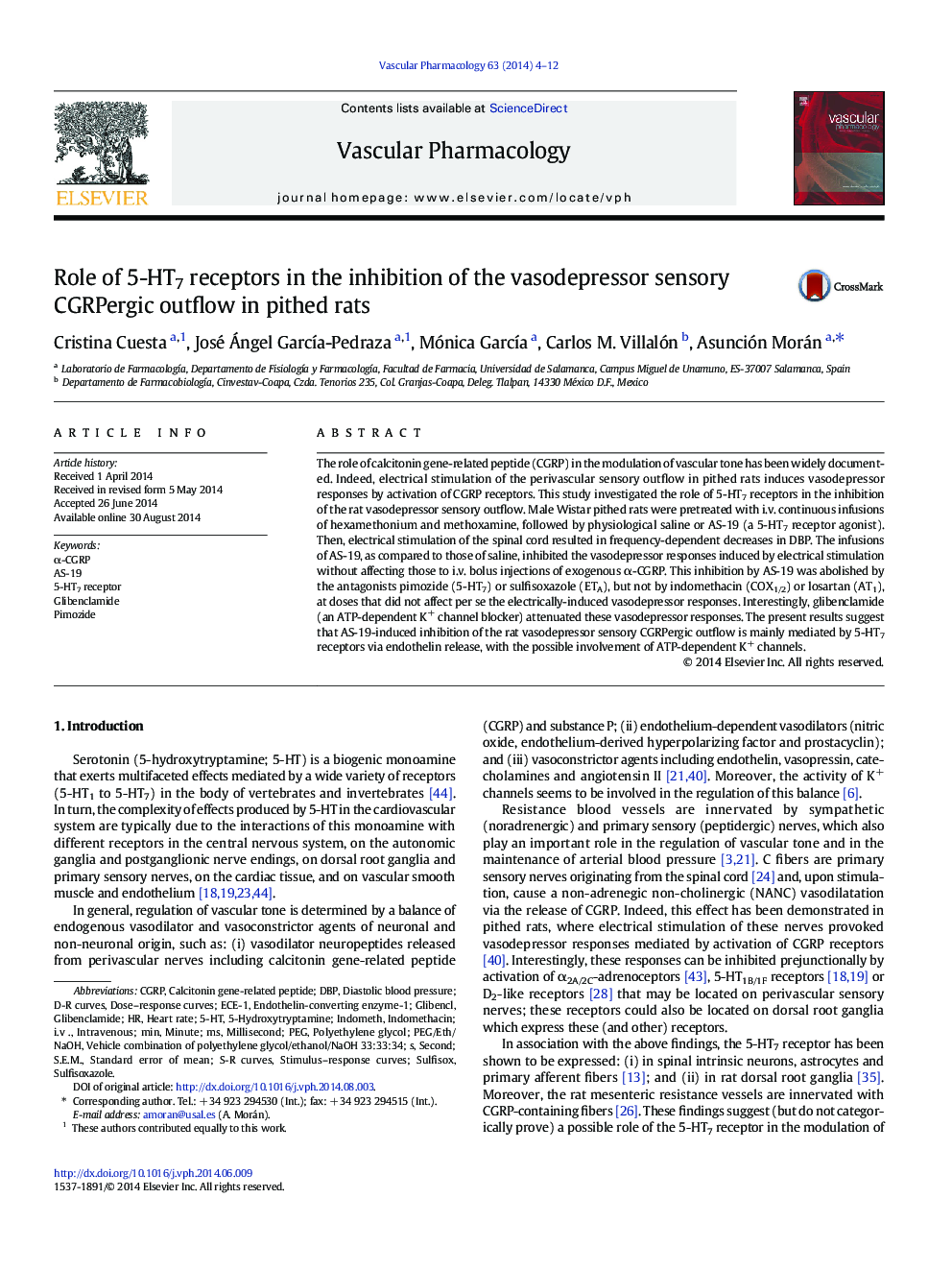| Article ID | Journal | Published Year | Pages | File Type |
|---|---|---|---|---|
| 2574108 | Vascular Pharmacology | 2014 | 9 Pages |
The role of calcitonin gene-related peptide (CGRP) in the modulation of vascular tone has been widely documented. Indeed, electrical stimulation of the perivascular sensory outflow in pithed rats induces vasodepressor responses by activation of CGRP receptors. This study investigated the role of 5-HT7 receptors in the inhibition of the rat vasodepressor sensory outflow. Male Wistar pithed rats were pretreated with i.v. continuous infusions of hexamethonium and methoxamine, followed by physiological saline or AS-19 (a 5-HT7 receptor agonist). Then, electrical stimulation of the spinal cord resulted in frequency-dependent decreases in DBP. The infusions of AS-19, as compared to those of saline, inhibited the vasodepressor responses induced by electrical stimulation without affecting those to i.v. bolus injections of exogenous α-CGRP. This inhibition by AS-19 was abolished by the antagonists pimozide (5-HT7) or sulfisoxazole (ETA), but not by indomethacin (COX1/2) or losartan (AT1), at doses that did not affect per se the electrically-induced vasodepressor responses. Interestingly, glibenclamide (an ATP-dependent K+ channel blocker) attenuated these vasodepressor responses. The present results suggest that AS-19-induced inhibition of the rat vasodepressor sensory CGRPergic outflow is mainly mediated by 5-HT7 receptors via endothelin release, with the possible involvement of ATP-dependent K+ channels.
Graphical abstractFigure optionsDownload full-size imageDownload high-quality image (152 K)Download as PowerPoint slide
